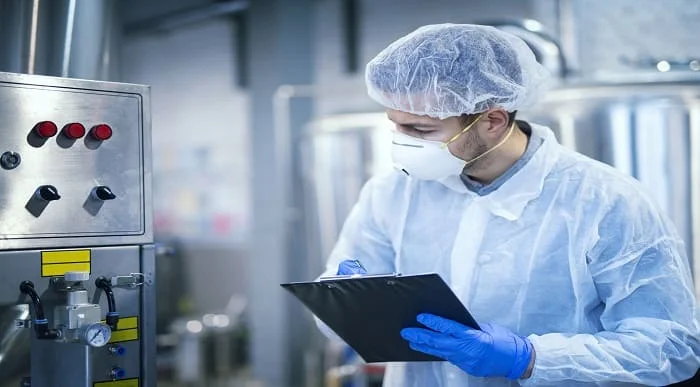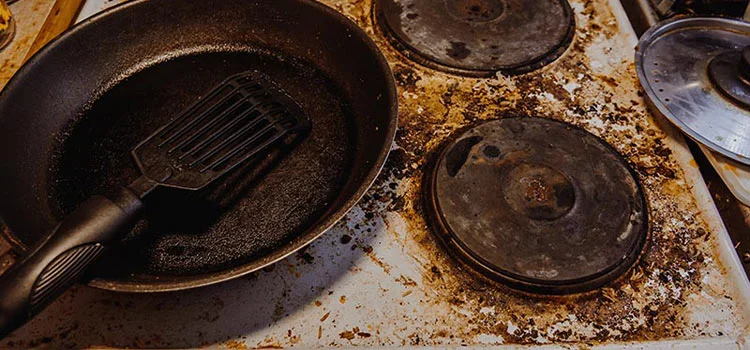Food Hygiene & Safety
How can Poor Food Hygiene Adversely Affect a Food Business? Details Guideline
Did you know, poor food hygiene may lead to serious health conditions like gastroenteritis, Hepatitis A and food poisoning? Alarming, right?
Poor food hygiene not only affects the health of consumers but also diminishes the reputation of food establishments. The food businesses responsible for conducting poor food hygiene practices can face legal action.
The FSA investigates food businesses that practise poor food hygiene and prosecute them with the help of local authorities. Know in detail about the consequences, risk factors and steps to eliminate poor food hygiene from this blog.
Table of Content
- What is Poor Food Hygiene?
- What are the Consequences of Poor Food Hygiene?
- What are the Symptoms of Foodborne Diseases?
- What are the Risk Factors Associated with Foodborne Diseases?
- Who should take Food Hygiene Training?
- Why is Food Hygiene Training so Important?
- Why is a Good Food Hygiene Rating Important?
- What are the Steps to Eliminate Poor Food Hygiene?
- Conclusion
- What to Read Next:
What is Poor Food Hygiene?
While maintaining proper food hygiene is the practice of cooking and storing foods at the correct temperature to prevent illness or the spread of diseases, poor food hygiene resembles just the opposite.
Poor food hygiene is when foods are not properly cooked, stored at the wrong temperature and get contaminated with bacteria. The practice of poor food hygiene can give rise to severe foodborne diseases that can adversely affect any food business.
What are the Consequences of Poor Food Hygiene?
Poor food hygiene can be the reason for food poisoning and other foodborne diseases. There is a range of bacterium, viruses and germs which can multiply on foods, allowing foodborne diseases to grow.
Some of the common foodborne diseases are-
Hepatitis A
Hepatitis A is a viral liver disease caused by the consumption of contaminated food. The person suffering from Hepatitis A usually recovers within a couple of months, however, it can be life threatening if it causes the liver to stop working.
Food Poisoning
Poor food hygiene may lead to food poisoning that involves unpleasant symptoms such as vomiting, diarrhoea and high temperatures.

Achieving 5*( 5 star) Food Hygiene Rating | Online Course
Campylobacteriosis
Campylobacteriosis is caused by undercooked meats, cross-contamination, contaminated water, and raw milk.
According to the Food Standards Agency, “There has been a notable increase in outbreaks of campylobacter in the UK in recent years. The reason for the increase is assumed to be related to the use of undercooked chicken livers in preparing pâté and parfait dishes. ”
Campylobacter causes severe diarrhoea, stomach cramps and sometimes can lead to more serious complications.
Gastroenteritis
This is an infection which causes symptoms such as excessive vomiting and diarrhoea. It is caused by the norovirus or bacterial food poisoning, which is a result of poor food hygiene.
This infection is caused by the staphylococcal bacteria called “staphylococcus aureus.”
This bacterium causes vomiting and extreme stomach pains. It is usually found on the throat, skin, nose, and ears of humans and is transferred to food due to poor handling practices.

Salmonellosis
Salmonellosis is caused by Salmonella bacteria found in raw or undercooked eggs, undercooked poultry and meat, and untreated milk. Symptoms include fever, diarrhoea, stomach pain, and vomiting.
- Coli
- Coli bacteria, usually found in undercooked beef, unpasteurised milk, and contaminated meats, causes severe bloody diarrhoea and can also lead to serious kidney damage.
Listeriosis
It is caused by listeria and can lead to miscarriage and meningitis in the new-born. This infection mostly affects vulnerable groups like pregnant women, immunodeficient people, and children.
What are the Symptoms of Foodborne Diseases?
Some of the notable symptoms of foodborne diseases are-
- The common symptoms of foodborne illness are diarrhoea and/or vomiting, that typically lasts 1 to 7 days. Other symptoms might include abdominal cramps, nausea, fever, joint/back aches, and fatigue.
- The illness mostly known as “stomach flu,” may actually be a foodborne illness caused by a pathogen, i.e. virus, bacteria, or parasite present in contaminated food or drinks.
- The time between exposure to the pathogen and onset of symptoms can range from several hours to a week.
What are the Risk Factors Associated with Foodborne Diseases?
Lack of proper knowledge regarding food hygiene may lead to unawareness about the risk factors associated with foodborne diseases. Have a look at the factors that might contribute to food contamination and diseases.
Improper storing temperatures
One should store foods at appropriate temperatures to decrease the growth of any pathogenic bacteria. To avoid contamination, store cold foods below 41°F and hot foods above 135°F.
The temperature range of 41°F-135°F is the danger zone because in this range, pathogenic bacteria grow rapidly. So, staff should ensure that the food doesn’t remain in this range for too long.
Improper cooking temperatures
Raw meats naturally have pathogenic bacteria on them. It is important to cook all meat, poultry and seafood properly to kill bacteria that can cause food poisoning. An accurate probe thermometer can measure the temperature of the food.
Top Courses of this Category
Contaminated equipment and utensils
The bacteria on contaminated equipment and utensils can transfer to food and cause foodborne illnesses. Also, the residual bacteria at room temperature can multiply rapidly. Therefore, one should wash and sanitise all the food equipment and utensils at least once every four hours.
Poor personal hygiene
Food workers with poor self-hygiene can expose food to harmful bacteria, which may lead to an instance of food poisoning. Additionally, if any worker is sick with vomiting or diarrhoea, they increase the risk of spreading disease when handling food.
Unsafe sources of food
All the foods received by the food business owners must be obtained from approved sources that comply with applicable laws and regulations. In addition, it is prudent of food business operators to see how vendors handle the food they are providing to ensure the process does not expose food to any harmful bacteria.
Who should take Food Hygiene Training?
Generally, food businesses should at least have training equivalent to Level 2 for food hygiene. Whether you are preparing and distributing the food yourself or selling pre-prepared food, you should still take Level 2 Food Hygiene training.
Additionally, supervisors must at least have Level 3 expertise in managing food hygiene and safety. You can have on-the-job training or you can avail the courses online.
Why is Food Hygiene Training so Important?
Proper knowledge of food hygiene is crucial to ensuring consumer safety and trust. Any negligence towards hygiene during food preparation, processing or production can put consumers health at risk. That is why it is vital for food handlers to have training on food hygiene.
Reduces Wastage of Food
Lack of proper food hygiene practice, for example, storing food at inappropriate temperatures, in unsuitable containers, or without a proper rotation system, can make the food unsuitable for consumption.
Food hygiene training teaches people how to properly organise and store food in order to maintain the quality and minimise the wastage of food. This saves the business time and money along with ensuring the quality of food.
Prevents Cross-contamination
Bad food hygiene practises that could lead to cross-contamination can be the reason for food poisoning and allergic reactions.It occurs when you handle food in a way that allows harmful bacteria or allergens to spread from one surface to another. For example, using the same chopping board to prepare meat and ready-to-eat vegetables might cause cross-contamination.
Food-poisoning bacteria, such as E.coli and salmonella, can also spread from food to utensils and people’s hands and then to ready-to-eat food if you don’t have the knowledge of how to handle foods safely. Food hygiene training would introduce you to these.
Helps to Build a Positive Reputation
Any organisation would strive to build a positive reputation and establish credibility to its customers. It is no different for food establishments.
When the food handlers take appropriate hygiene training, it automatically reflects on the food establishment. This helps to create a good reputation and customers consider it as a food establishment.
Improves Efficiency of Staff
Lack of proper training is often the reason for poor efficiency in food businesses. When staff know about workplace hygiene and maintain storage methods, work activities will flow better.
Creates Proper Working Conditions
Working conditions that are unhygienic can result in low morale among workers and demotivate them. That is why food businesses should practise in the workplace.
Cleanliness in the workspace can be maintained when all the staff have adequate knowledge of food hygiene and safety. This benefits the food establishments to prepare and serve hygienic foods.
Why is a Good Food Hygiene Rating Important?
The food hygiene rating ranges from 5 to 0. The higher the rating, the safer the food served to eat.
A good food hygiene rating can impact customer choice. Most consumers tend to check the food hygiene rating before visiting any restaurant. Customers are unlikely to visit a place with a low rating. A good food hygiene rating establishes that your food business upholds food hygiene to the highest value.
What are the Steps to Eliminate Poor Food Hygiene?
Cook food thoroughly
Make sure to cook all meat, poultry and seafood at the proper temperature. It is possible to kill all traces of campylobacter by cooking chicken thoroughly.
Use separate chopping boards
Use a separate chopping board and utensils for meat, vegetable, and dairy preparation. This is to avoid contaminating ready-to-eat foods with harmful bacteria that can be present in raw food.
Use proper food controls
Proper food storage and temperature control can prevent E. coli and salmonella from spreading. Separate raw foods from ready-to-eat food items and store them on a clean shelf in the refrigerator. Store all cooked meat, poultry, and eggs at 40°F or below.
Wash kitchen equipment regularly
Wash knives and utensils before and after preparing food, particularly after using them for raw meat, eggs, fish and vegetables.
Enforce proper hygiene requirements
Employees should wear clean uniforms, keep their hair covered, and wash their hands often. They should get training on food hygiene and hand-washing techniques.
Implement good housekeeping procedures
Cleanliness is essential for preventing foreign objects like hair and insects from contaminating food. One should sweep and mop floors after each shift, frequently empty and sanitise garbage containers, and frequently clean kitchen counters and walls.
Conclusion
Proper food hygiene practice can help you to get a good number of customers. On the other hand, you may lose your customers if your business practises poor food hygiene.
By now, you’ve already known how poor food hygiene can affect your business. So, try maintaining food hygiene to gain the consumers’ trust and run your food business smoothly.
What to Read Next:
- How to Cook Frozen Chicken – Video Guide & Image Included
- Can You Reheat Risotto? Safety and The Science of Reheating Risotto
- What is the Temperature Danger Zone for Food? Graphical Chart Included
- Can you Reheat Fish? The Science and Process of Reheating Fish
- What does Soy Milk Taste Like – A Guide to Taste, Storage & Usage
- What are High Risk Foods – Top 20 High Risk Foods
- What Does Due Diligence Mean in Food Hygiene? Examples of Due Diligence










